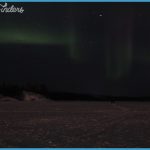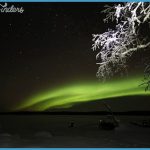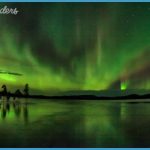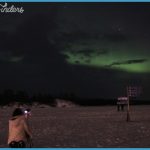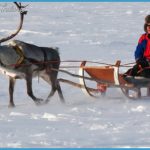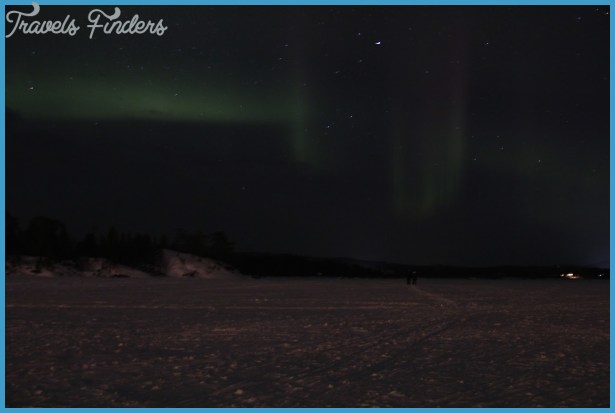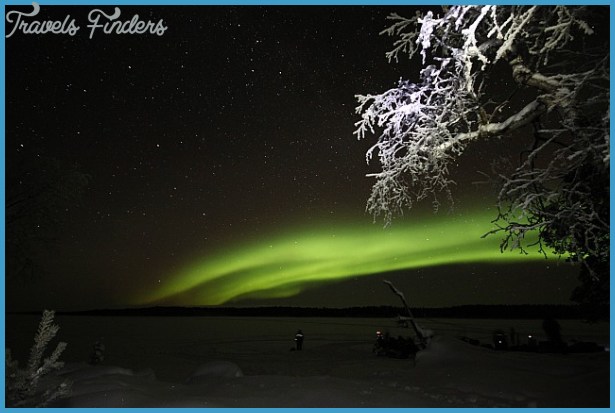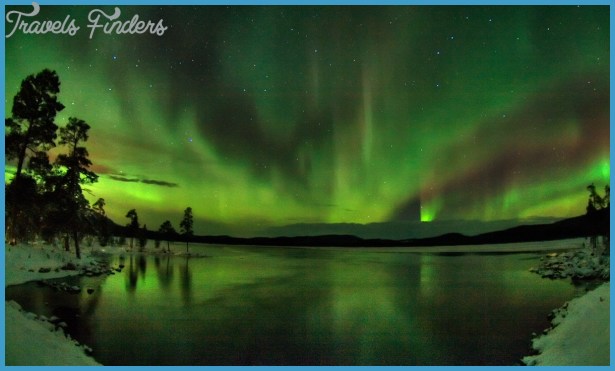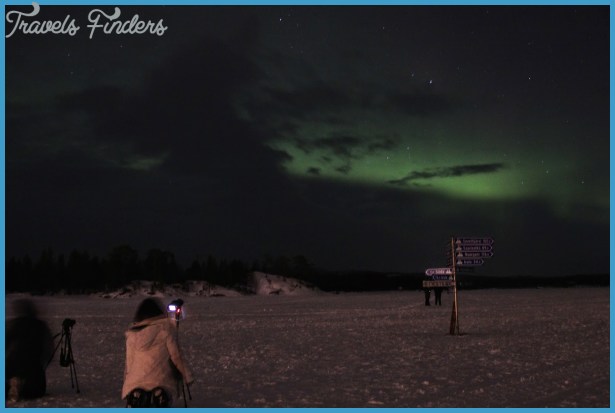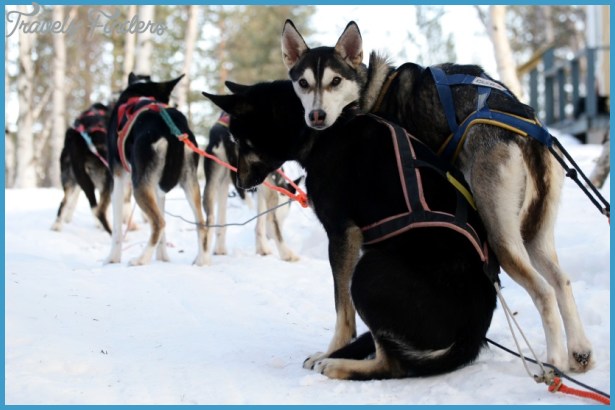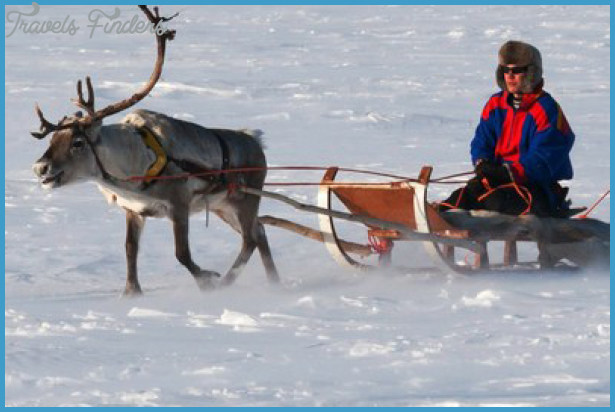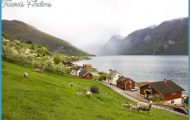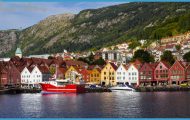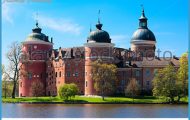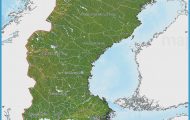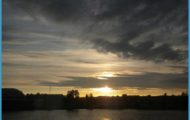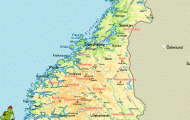Province: Lapin laani (Lapplands IanLapland).
Lake Inari is the third largest lake in Finland (area 1100 sq. km (425 sq. miles), length 80 km (50 miles), width 41 km 25 miles) although because of its many indentations and ramifications it is not possibleto determine its exact size. The number of islands in the lake is usually given as 3000. This bizarre area straddling the 69th parallel is one of Finland’s most fascinating regions.
The shores of the lake are rocky. The trees found here are spruce, pine and birch, in dwarf Arctic forms; on the NW shores of the lake, NE of Partakko (on the Kaamanen-Sevettijarvi road), the line above which the spruce will not grow reaches down to the lake. Here the climate is of Arctic severity until well into spring, since the Scandinavian mountains block the moderating influence of the Gulf Stream which washes the Norwegian coasts. The ice on the lake frequently does not disappear until June. In this region the final phase of winter merges almost imperceptibly into the beginning of summer, with at most one or two weeks which can be regarded as spring.
Visitors heading for Norway on Road 4 will get some impression of this strange area on the stretch of road between Ivalo and Inari. Those spending at least one night in the region should include in their itinerary a boat trip on the lake, perhaps to the island of Ukkokivi. In pagan times the island was regarded by the Lapps as the most sacred of the many islands of Inarijarvi.
The lake, which extends from NE to SW, is served by only three roads. Road 4, coming from the S (Sodankyla), runs along the SW shore; beyond Inari it runs N. Beyond Kaamanen the road forks: No. 4 turns W in the direction of Karigasniemi and the Norwegian frontier, while Road 970 continues N to Utsjoki and then follows the River Tenojoki to Nuorgam. From Kaamanen, a little country road runs NE to Partakko and the Skolt village of Sevettijarvi and, after about 130 km (81 miles), reaches the Norwegian frontier 10 km (6 miles) before Neiden. From Ivalo, Road 9681 runs NE to Nellimo and the Soviet frontier (no entry). Visitors cannot approach the frontier itself either by car or on foot, since a strip of territory on the Finnish side 1 km (§ mile) wide is closed except to permit-holders. It is patrolled by frontier guards. (Under a frontier agreement between Finland and the Soviet Union, both countries are required to protect the frontier.)
There are no motor roads on the much-indented NE side of the lake, and even walkers find this difficult country, since much of it is boggy and impassable. There are no villages here, just isolated cottages and huts.
There is good fishing on the shores of the lake, around the islands and on the open lake. Information about fishing permits can be obtained in the villages and hotels. Although in this thinly populated region the enforcement of the regulations may be difficult, visitors who fish without permission will be unpopular with the local people.
The commune of Inari is the largest in Finland, with an area of 17,000 sq. km (6560 sq. miles). Of its population of 7000 people, a fifth are Lapps (Samer). In the village of Inari, there are separate schools for Lapps and Finns.
The great attraction of this region is its unspoiled natural scenery. Large areas show no trace of the hand of man. There is no need, therefore, to head for any particular spot: the whole region is beautiful.
Ivalo (Ivalo Hotel, 50 camp site, with chalets, to the S of the village), on the Ivalojoki, spanned by a large bridge, has the most northerly airport in Finland. Halfway between Ivalo and Inari is the Karhunpesakivi (Bear’s Den Rock), with a cafe, picnic area and telephone; fishing.
Inari (Saariselan Retkeilykeskus Hotel, 236 Laanihovi, 50 Matkailuhotelli, 33 b.), at the outflow of the Joenjoki (good fishing) into the lake, has a high school for Lapps. Next to the forestry office is a Lapp Open-Air Museum (Lapp village). Awalkof7-5km (4imiles) to the NE leads to the old Lapp church of Pielppajarvi (originally 17th c. rebuilt 1762). In earlier times, the Lapps had to bury their dead on islands in the lake, since the bears (still numerous here in the 19th c.) used to dig up the graves.
A boat trip on the rivers Ivalojoki and Lemmenjoki offers unspoiled natural scenery.

